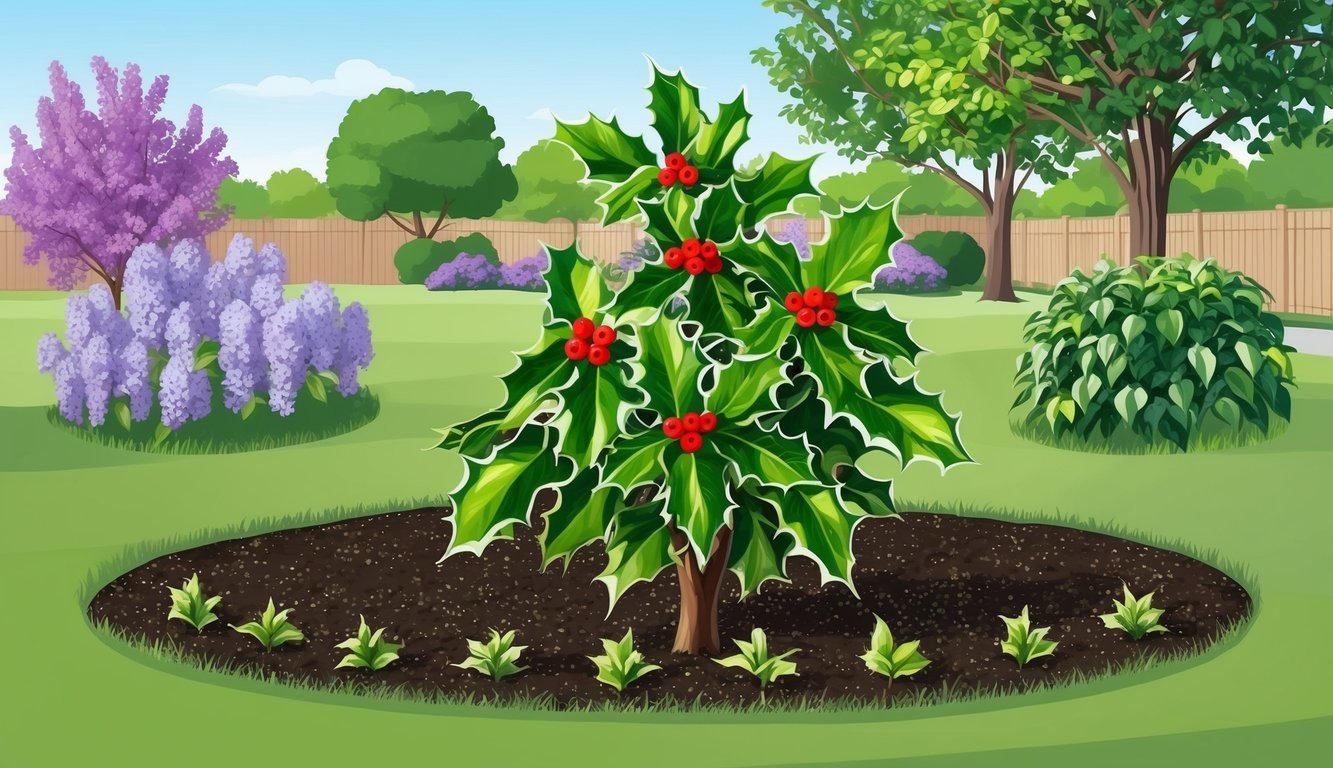
If you want to keep your holly plants healthy and vibrant, it’s a good idea to avoid planting certain species nearby.
Holly plants are not just beautiful additions to gardens and festive decor; they also play a vital role in local ecosystems by providing food and shelter for wildlife.
While many plants can happily coexist with holly, some can steal critical resources or even invite pests and diseases.
After consulting with horticulture experts, we’ve put together a list of plants that could spell trouble for your holly.
Plants to Avoid
- Lilac: A Colorful Complication – Lilacs bring lovely bursts of color to gardens, but their preference for slightly alkaline soil clashes with holly’s love for acidity.
Planting them close together can lead to stunted growth for the holly.
- Japanese Cedar: A Tall Challenge – Also known as Japanese cryptomeria, this tree or shrub can become quite large.
Its grandeur may overshadow nearby holly, competing fiercely for the nutrients it needs to thrive.
- Hackberry Trees: The Competitive Neighbors – While hackberry trees flourish in higher pH levels that promote their growth, they can make life challenging for holly.
These trees produce chemicals that inhibit the growth of surrounding plants, further complicating the coexistence.
- English Ivy: The Overachieving Vine – This invasive vine has a reputation for monopolizing resources.
English ivy can quickly overshadow holly, drowning out its growth and crowding out other plants in the garden.
- Greater Periwinkle: The Spreading Threat – Known as vinca vine, Greater Periwinkle can take over garden spaces, posing a serious risk to holly.
Unlike its less aggressive cousin, Vinca minor, which may coexist more peacefully, Vinca major can be a significant threat.
- Spindle Tree: The Uninvited Pest Magnet – The spindle tree isn’t directly competing for resources, but it attracts scale insects, which could damage the holly’s health, making it an undesirable companion.
- Ground Cover Junipers: The Aggressive Spreaders – Often chosen for landscaping, ground cover junipers have aggressive root systems that can stunt holly’s growth by competing for moisture and nutrients.
- Cypress Variants: The Expansive Rooters – Various cypress species develop extensive root systems that can interfere with holly’s access to essential resources, making them unsuitable companions.
- Black Walnut: The Harmful Neighbor – This well-known tree releases juglone, a chemical that is toxic to many plants, including holly.
Its presence can create an inhospitable environment for your holly and other garden neighbors.
Tips for Choosing Holly Companions
- Check pH Levels: Holly thrives best in acidic soil, so steer clear of plants that prefer higher pH levels.
- Consider Root Competition: Be mindful that larger plants can compete for water, light, and nutrients, potentially harming your holly.
- Sunlight is Key: Avoid planting large trees or invasive vines that could shade holly, as adequate sunlight is crucial for its growth.
- Space Wisely: Ensure that your plants have enough room to grow without overcrowding each other.
- Choose Native Flora: Opt for native species that can enrich the soil and environment rather than deplete it.
Good companions for holly include spicebush, blueberries, native azaleas, and evergreen rhododendrons.
By taking care to choose suitable companion plants, you can significantly enhance the health and beauty of your holly in the garden.
Source: Marthastewart.com

